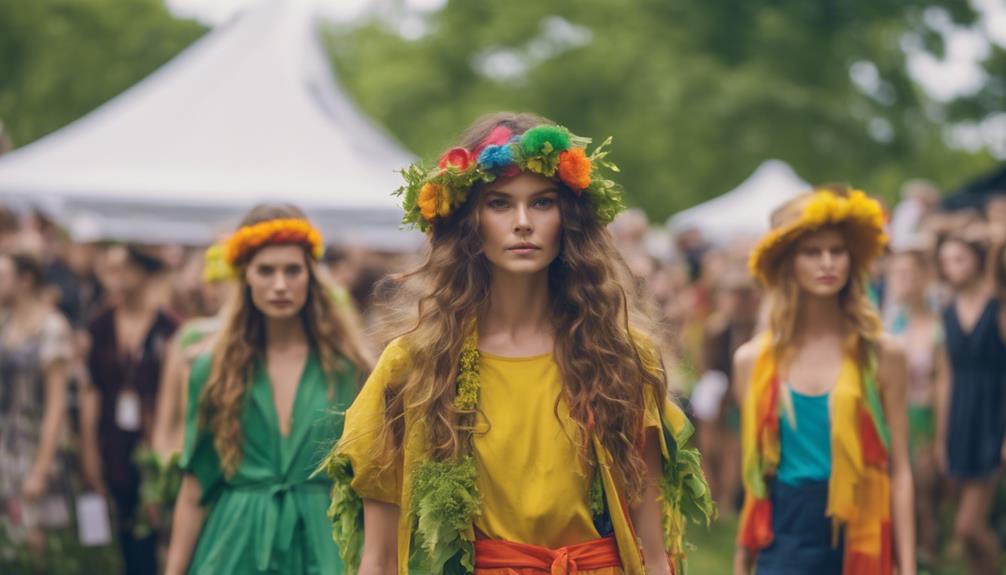The sustainable fashion industry is thriving, valued at around $8.16 billion and expected to make up over 6% of the overall fashion market by 2026. It is anticipated to reach $10 billion by 2025, with the resale market alone predicted to hit $350 billion by 2027. By 2030, the industry could expand to a remarkable $33.05 billion, fueled by increasing consumer demand for eco-friendly options. Over 69% of Millennials and Gen Z prefer sustainable products, indicating a clear shift towards responsible consumerism. If you’re interested in learning more about the factors driving this growth and the future of sustainable fashion, there is plenty more to discover.
Key Takeaways
- The sustainable fashion industry was valued at $6.35 billion in 2020 and is projected to reach $33.05 billion by 2030, growing at a CAGR of 9.7%.
- The ethical fashion market is expected to grow from $7.55 billion in 2022 to $11.12 billion by 2027, reflecting increasing consumer demand.
- The resale clothing market is anticipated to hit $350 billion by 2027, showcasing a shift towards second-hand and circular fashion options.
- The global textile recycling market is projected to grow from $4.1 billion in 2022 to $5.3 billion by 2030, highlighting sustainability efforts.
Overview of Sustainable Fashion Industry
The sustainable fashion industry is rapidly evolving, driven by consumers' increasing demand for ethically made and eco-friendly apparel. As you immerse yourself in this burgeoning sustainable fashion market, you'll notice a significant shift in consumer preferences.
The ethical fashion market is currently valued at around $8.16 billion, showcasing how consumers become more conscious about the environmental impact of their clothing choices. This trend is evident in the projected growth of sustainable apparel, which is expected to exceed a 6% share of the overall fashion market by 2026.
Fast fashion brands are feeling the pressure, as shoppers increasingly seek alternatives that minimize their carbon footprint. Remarkably, the resale clothing market is anticipated to grow three times faster than new apparel, reaching a staggering $350 billion by 2027.
With the sustainable fashion sector expected to reach $10 billion by 2025 and a jaw-dropping $33.05 billion by 2030, it's clear that market growth is on an upward trajectory. You'll find that the industry isn't just a trend but a movement towards a more responsible and sustainable future in fashion.
Key Market Statistics
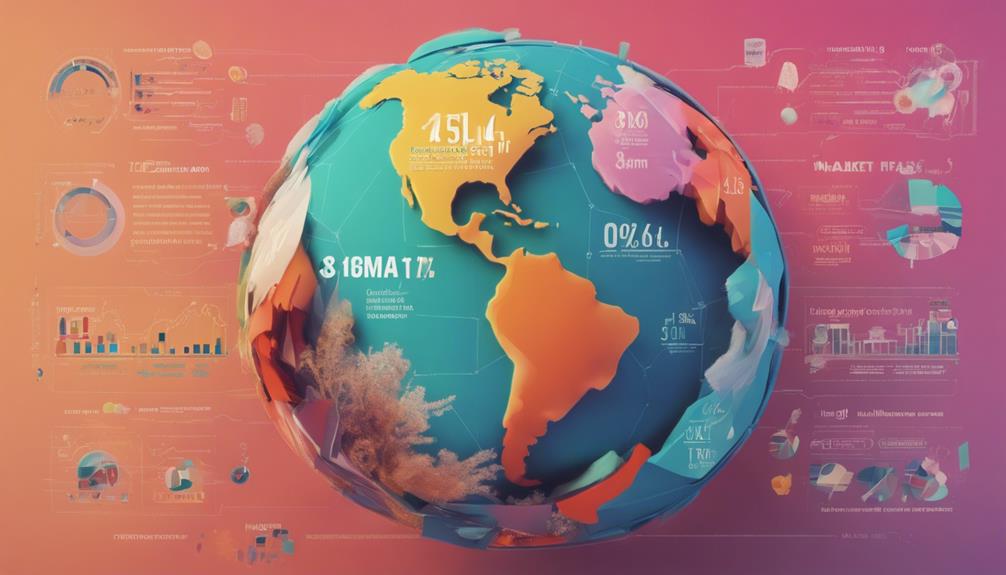
When you look at the sustainable fashion industry, you'll notice some impressive market valuation insights.
The growth projections ahead indicate a significant shift in consumer spending trends, with many willing to invest more in eco-friendly brands.
Let's break down these key statistics to see how they're shaping the future of fashion.
Market Valuation Insights
Valuing the sustainable fashion industry reveals a market worth approximately $6.35 billion in 2020, with expectations of robust growth at a CAGR of 9.7% through 2028. This significant market size showcases the increasing consumer demand for eco-friendly products and sustainable apparel.
As more individuals prioritize ethical consumption, the sustainable fashion market is set to capture a larger market share, with sustainable apparel revenue anticipated to exceed 6% of the overall fashion market by 2026.
Moreover, the circular fashion economy, which emphasizes resale, rental, and recycling models, stands to generate around $560 billion in economic opportunities. This shift towards circular fashion not only supports sustainability but also aligns with growing consumer preferences.
The global textile recycling market, valued at approximately $4.1 billion in 2022, is expected to grow to $5.3 billion by 2030, further highlighting the industry's commitment to reducing waste.
Growth Projections Ahead
As the sustainable fashion industry continues to expand, key market statistics highlight impressive growth projections that underscore its potential impact on the global economy.
The global sustainable fashion market was valued at approximately $6.35 billion in 2020 and is projected to grow at a CAGR of 9.7%, reaching an astonishing $33.05 billion by 2030.
You'll notice the ethical fashion market is also on the rise, with a valuation of $7.55 billion in 2022, expected to grow to $11.12 billion by 2027.
The share of sustainable apparel is set to exceed 6% by 2026, driven by changing consumer preferences for eco-friendly products.
Meanwhile, the resale clothing market is projected to hit $350 billion by 2027, growing three times faster than the new apparel market.
Innovations in sustainable practices and materials are paving the way for circular business models, which could generate an impressive $560 billion in value.
With these growth projections, it's clear that the sustainable fashion market isn't just a trend; it's a transformative movement that's reshaping the industry landscape.
Consumer Spending Trends
Shifting consumer spending trends are reshaping the sustainable fashion landscape, with millennials and Gen Z driving over 69% of online purchases in this sector. These generations aren't just participating; they're leading the sustainable fashion movement.
With 66% of global consumers willing to pay more for brands that prioritize eco-friendly products, it's clear that the demand for sustainable apparel is on the rise. The sustainable apparel market is projected to account for over 6% of the overall fashion market by 2026, reflecting a significant shift in consumer preferences.
Additionally, the ethical fashion market, valued at $8.16 billion, is expected to grow at a steady rate of 8.6% CAGR from 2027 to 2032, driven by increased awareness of sustainability.
Moreover, the resale clothing market is set to outpace the new apparel market, projected to reach $350 billion by 2027. This indicates a strong trend towards circular fashion practices, where consumers are opting for second-hand options while promoting sustainability.
As you navigate these trends, consider how your choices align with a more eco-conscious future in fashion.
Growth Projections

As you explore the growth projections for sustainable fashion, you'll notice impressive market value trends.
With a projected CAGR of 9.7%, the industry is set to reach around $33.05 billion by 2030, signaling a strong shift in consumer demand.
Additionally, the resale clothing market's rapid growth further emphasizes the potential for economic opportunities in this sector.
Market Value Trends
The sustainable fashion industry is set to experience remarkable growth, with projections indicating a rise from $6.35 billion in 2020 to nearly $33.05 billion by 2030. This surge reflects changing consumer preferences and a shift towards eco-friendly options.
Here are key trends shaping the market value:
- Growth Rate: The sustainable fashion market is projected to grow at a CAGR of 9.7%, reaching around $10 billion by 2025.
- Ethical Fashion Market: Valued at $8.16 billion, this segment is expected to grow at a CAGR of 8.6% from 2027 to 2032.
- Sustainable Apparel Revenue: Forecasts suggest that sustainable apparel revenue share will exceed 6% by 2026, demonstrating a significant shift in consumer preferences.
- Gen Z Influence: By 2027, Gen Z is expected to hold a 34% share of the UK sustainable apparel market, highlighting their growing impact on fashion trends.
Additionally, the global textile recycling market, valued at around $4.1 billion in 2022, is projected to reach $5.3 billion by 2030, further indicating the demand for sustainable practices.
Projected Growth Rate
Projected growth rates for the sustainable fashion industry indicate a robust expansion, with expectations to reach nearly $33.05 billion by 2030. This significant growth reflects the increasing consumer demand for eco-friendly options and ethical fashion.
The sustainable fashion market was valued at approximately $6.35 billion in 2020, and it's projected to grow at a 9.7% compound annual growth rate (CAGR), reaching an estimated $10 billion by 2025.
Moreover, sustainable apparel revenue is expected to surpass 6% of the overall fashion market by 2026, highlighting the shift toward more responsible purchasing habits. The resale clothing market is also on the rise, projected to grow three times faster than traditional apparel, with an estimated value of $350 billion by 2027.
Innovations in circular business models are paving the way for sustainable practices, creating significant economic opportunities within the fashion sector.
As the ethical fashion market continues to evolve, it will likely shape the future of fashion, attracting more brands and consumers alike. By embracing these trends, you can be part of a movement that prioritizes sustainability and ethical practices in the industry.
Consumer Trends and Attitudes

A significant 66% of global consumers are ready to spend more on sustainable brands, showcasing a notable shift towards eco-conscious purchasing habits. This trend is particularly strong among millennials, with 73% preferring sustainable products over conventional options. You're not alone in considering the environmental impact of your purchases; 57% of consumers share your concern, reflecting a growing awareness of sustainability in shopping.
Here are four key factors influencing your purchasing decisions:
- Transparency: 94% of shoppers prioritize ethical practices, emphasizing the importance of knowing where and how products are made.
- Brand Commitment: Sustainable clothing brands that demonstrate a genuine commitment to eco-friendly practices attract more loyal customers.
- Quality Over Quantity: Many consumers now prefer fewer, high-quality items, focusing on longevity and sustainability rather than fast fashion.
- Community Influence: Social media and peer recommendations play a significant role in shaping consumer attitudes toward sustainable choices.
As you navigate the marketplace, remember that your preferences can drive the change towards more sustainable practices in the fashion industry.
Environmental Impact Data
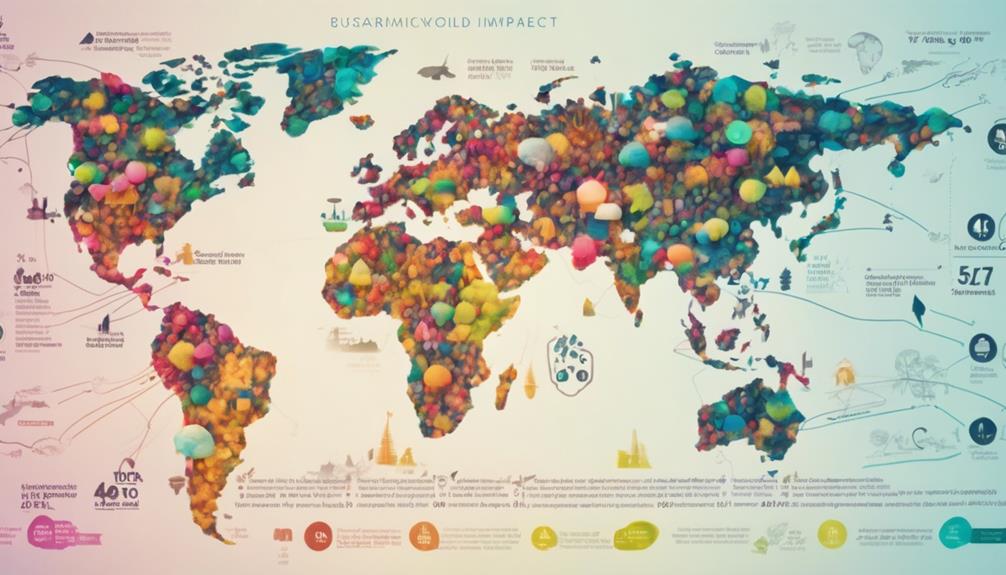
Without significant changes in practices, the fashion industry will produce an alarming 1.27 billion metric tons of CO2 equivalents by 2030, underscoring the urgent need for sustainable solutions.
The clothing industry is currently responsible for 10% of global carbon emissions, with manufacturing being the largest contributor to greenhouse gas emissions. This environmental impact is further exacerbated by textile production, which accounts for 20% of freshwater pollution. For instance, producing just one pair of jeans requires an astonishing 1,800 gallons of water.
Moreover, the industry generates approximately 92 million tons of textile waste each year, with less than 1% of clothing materials being recycled. The reliance on non-biodegradable materials like polyester, which makes up over 50% of fibers used, compounds the problem by releasing harmful microfibers into the environment.
To address these challenges, you can support sustainable fashion by choosing apparel companies that prioritize sustainable materials and effective recycling methods. By making informed decisions, you contribute to reducing carbon emissions and minimizing textile waste, paving the way for a more environmentally responsible clothing industry.
Major Players and Initiatives

The sustainable fashion landscape is rapidly evolving, with major brands like Adidas and H&M leading the charge toward more eco-friendly practices. These companies aren't just improving their image; they're responding to rising consumer demand for sustainability initiatives and ethical alternatives.
Here are some key players and efforts shaping the industry:
- Adidas: Committed to using recycled materials and reducing carbon emissions in production.
- H&M: Launched its Conscious collection, focusing on eco-friendly materials and transparency in its supply chain.
- Fashion Pact: An initiative that unites over 60 brands to collectively commit to sustainability goals and enhance collaboration across the sector.
- Global Organic Textile Standard (GOTS): This certification helps consumers identify brands that genuinely adhere to sustainable practices, promoting ethical choices in the marketplace.
As the ethical fashion market continues to grow, projected to reach $10 billion by 2025, these efforts highlight the industry's growth. Major brands embracing eco-friendly materials and sustainability initiatives are setting a path for others to follow, shaping the future of fashion for a greener planet.
Innovations in Sustainable Fashion
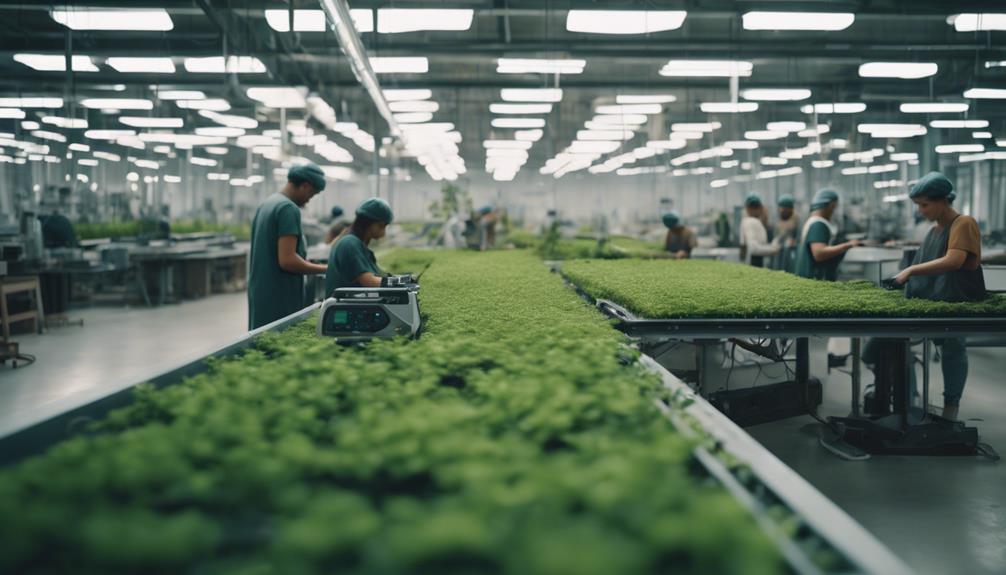
Innovative materials are transforming sustainable fashion, with advancements like plant-derived and mycelium textiles leading the way in reducing environmental impact. These innovations not only provide alternatives to conventional fabrics but also promote a more sustainable apparel industry. Fashion companies are increasingly focusing on using recycled materials, fostering circularity in their products.
Here's a quick look at some key innovations:
| Innovation | Description |
|---|---|
| Plant-Derived Fabrics | Made from organic sources, minimizing environmental harm. |
| Mycelium Textiles | Created from fungi, offering biodegradable options. |
| Recycled Polyester | Derived from plastic bottles, promoting textile recycling. |
| Circular Fashion Models | Systems designed to reduce waste and encourage re-use. |
With around 102 companies dedicated to developing sustainable materials as of 2023, the textile recycling market is also on the rise. Valued at $4.1 billion in 2022, it's expected to reach $5.3 billion by 2030. These innovations are paving the way for a more responsible fashion future, greatly impacting the industry's environmental footprint.
Challenges Facing the Industry
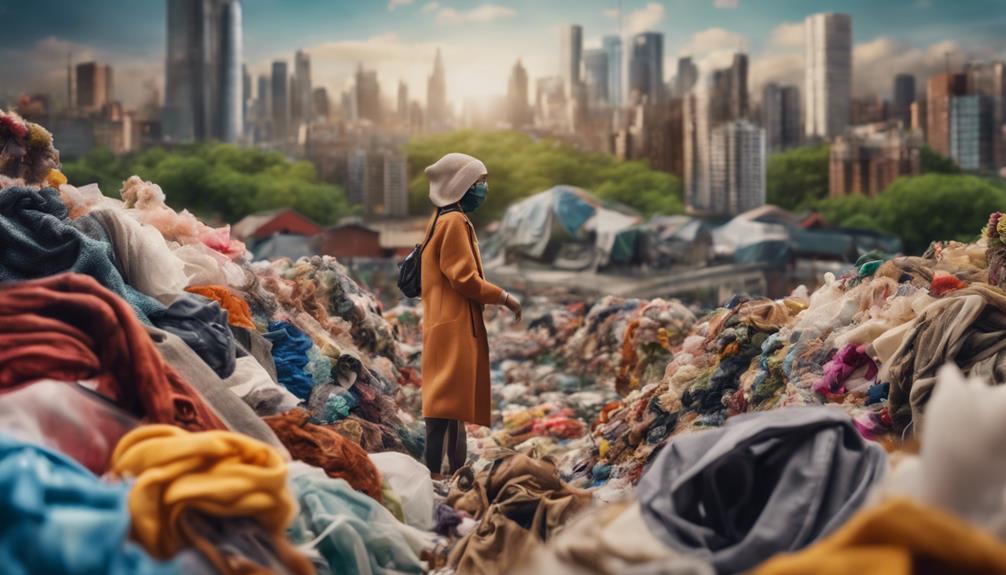
Sourcing sustainable materials poses significant challenges for the fashion industry, impacting production efficiency and driving up costs. This complexity often leads to ethical products being priced higher, which many consumers find hard to justify. As a result, affordable options remain a priority, complicating brands' efforts to promote sustainable fashion. Here are some key challenges:
- Consumer Confusion: Over half of US shoppers struggle to identify sustainable items, highlighting the need for better consumer education.
- Fast Fashion Resistance: Consumers are used to low-cost, trend-driven shopping habits, making them less receptive to sustainable alternatives.
- Lack of Industry Commitment: Only 9% of major brands have sustainability strategies, revealing a significant gap in accountability and ethical practices.
- High Production Costs: Sourcing sustainable materials often leads to increased costs, which can deter brands from fully committing to sustainability strategies.
These hurdles make it difficult for the sustainable fashion industry to thrive.
Without a concerted effort to educate consumers and commit to ethical practices, the gap between affordability and sustainability will likely persist.
Frequently Asked Questions
What Is the Size of the Sustainable Fashion Market?
The sustainable fashion market's size is impressive, valued at around $6.35 billion in 2020. It's expected to grow considerably, reaching about $33.05 billion by 2030, reflecting your increasing demand for eco-friendly clothing options. Sustainable fashion growth numbers are driven by a growing awareness of the environmental and social impact of fast fashion. Consumers are actively seeking out brands that prioritize sustainable and ethical practices, and this is reflected in the projected market growth. As more and more companies embrace sustainable fashion principles, we can expect the market to continue its upward trajectory in the coming years.
What Is the Value of the Sustainable Fashion Industry?
You wouldn't believe it, but the sustainable fashion industry's value is skyrocketing. Currently, it's around $6.35 billion, with projections hitting $10 billion by 2025 and a staggering $33.05 billion by 2030. Exciting, right?
How Many People Prefer Sustainable Fashion?
You'll find that a significant majority of consumers, like 66% globally and 73% of millennials, prefer sustainable fashion. This shift highlights how more people are prioritizing eco-friendly choices in their shopping habits today.
How Big of a Polluter Is the Fashion Industry?
The fashion industry's like a heavy cloud hanging over our planet, responsible for 10% of global carbon emissions. It generates staggering textile waste, pollutes waterways, and consumes vast resources, making it a major environmental culprit.
Conclusion
In the ever-evolving landscape of sustainable fashion, you're witnessing a revolution akin to a caterpillar transforming into a butterfly.
With the industry projected to reach $8.25 billion by 2023, your choices matter. Each sustainable purchase you make is like planting a seed, nurturing a future where style and ethics coexist.
As you embrace these eco-friendly practices, remember: every thread woven responsibly contributes to a more vibrant, sustainable world. Together, you're shaping a brighter, greener tomorrow.


